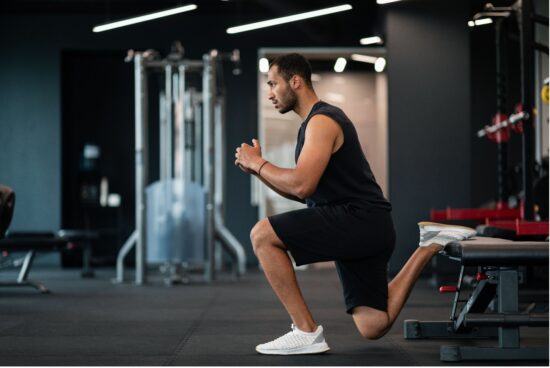Endurance athletes often focus their training on aerobic conditioning, long runs, and cycling miles. While these activities build stamina, they can neglect an equally important component of athletic performance: strength. Integrating strength training into an endurance athlete’s routine provides numerous benefits, from improved efficiency and power to reduced injury risk. However, the key lies in balancing strength work with endurance training to enhance performance without compromising stamina.
Kevin Morgan of Pittsford NY explores the importance of strength training for endurance athletes, the benefits it provides, and a practical framework for incorporating it into your routine.
The Role of Strength in Endurance Performance
Endurance athletes rely on repetitive motions—running, cycling, swimming, rowing—for extended periods. These activities require:
- Muscle Endurance: Sustained muscular contractions over long durations.
- Economy of Motion: Efficient use of energy to maintain pace.
- Injury Prevention: Resilient muscles and joints to withstand repetitive stress.
Strength training enhances all three by improving muscular strength, neuromuscular efficiency, and structural integrity. It also complements aerobic conditioning, allowing athletes to perform with less effort and greater power.
Benefits of Strength Training for Endurance Athletes
1. Improved Running and Cycling Economy
- Stronger Muscles, Less Effort: Strength training enhances the force output of muscles, meaning you can generate more power with less effort.
- Neuromuscular Efficiency: Strength training improves the coordination between muscles, making movements more precise and energy-efficient.
2. Enhanced Power and Speed
- Faster Sprints and Climbs: Whether it’s the final push in a marathon or tackling a steep incline on the bike, stronger muscles generate more power for explosive efforts.
- Better Acceleration: Strengthened fast-twitch muscle fibers improve the ability to change pace during races.
3. Reduced Injury Risk
- Stronger Joints and Tendons: Strength exercises fortify connective tissues, reducing the risk of common endurance injuries like IT band syndrome, shin splints, and runner’s knee.
- Balanced Muscles: Addressing imbalances prevents overuse injuries caused by dominant muscle groups.
4. Better Fatigue Resistance
- Delayed Muscle Fatigue: Stronger muscles can sustain submaximal efforts longer, improving endurance performance.
- Improved Recovery: Strength training boosts blood flow and enhances the body’s ability to repair muscles after long sessions.
5. Increased Bone Density
- Weight-bearing exercises strengthen bones, reducing the risk of stress fractures—a common issue among endurance athletes.
Balancing Strength and Endurance Training
One concern for endurance athletes is that strength training might hinder stamina. However, with proper planning, strength training complements endurance workouts without compromising aerobic capacity.
Key Principles
- Prioritize Quality Over Quantity: Focus on compound movements that offer maximum benefits in minimal time.
- Schedule Strength Sessions Wisely: Perform strength workouts on easy or recovery days to avoid overloading.
- Avoid Overtraining: Balance volume and intensity between endurance and strength work to ensure adequate recovery.
Strength Training Program for Endurance Athletes
Frequency
- 2–3 Sessions Per Week: This is sufficient to reap the benefits without interfering with endurance training.
Duration
- 30–60 Minutes Per Session: Short, focused sessions prevent excessive fatigue and save time for aerobic training.
Phases of Strength Training
- Off-Season: Focus on building overall strength and addressing weaknesses.
- Pre-Season: Transition to sport-specific strength and power work.
- In-Season: Maintain strength with lower frequency and intensity.
Essential Strength Exercises for Endurance Athletes
1. Squats
- Target Muscles: Quadriceps, hamstrings, glutes, and core.
- Benefits: Builds lower-body strength and power for running and cycling.
- Variation: Try front squats or Bulgarian split squats for added difficulty.
2. Deadlifts
- Target Muscles: Hamstrings, glutes, lower back, and core.
- Benefits: Strengthens posterior chain, improving running and cycling efficiency.
3. Lunges
- Target Muscles: Quads, glutes, and stabilizers.
- Benefits: Improves balance and unilateral strength, addressing imbalances.
- Variation: Walking lunges or reverse lunges.
4. Step-Ups
- Target Muscles: Glutes, hamstrings, and quads.
- Benefits: Mimics climbing motions, ideal for cyclists and trail runners.
5. Planks
- Target Muscles: Core, shoulders, and back.
- Benefits: Enhances core stability, essential for maintaining form over long distances.
- Variation: Side planks or plank with leg lifts.
6. Push-Ups
- Target Muscles: Chest, shoulders, and triceps.
- Benefits: Strengthens the upper body for swimmers and improves posture for runners.
7. Pull-Ups
- Target Muscles: Back, biceps, and shoulders.
- Benefits: Builds upper-body strength and counterbalances forward motion.
8. Hip Thrusts
- Target Muscles: Glutes and hamstrings.
- Benefits: Improves hip power, crucial for running and cycling.
Integrating Strength Training into Your Weekly Plan
A balanced week might look like this for a runner or cyclist:
- Monday: Easy endurance workout + core strength session.
- Tuesday: Interval or tempo run/ride.
- Wednesday: Strength training (full-body focus).
- Thursday: Long endurance session.
- Friday: Recovery day or light cross-training.
- Saturday: Strength training (lower-body focus).
- Sunday: Long run/ride.
Tips for Success
- Warm Up Properly: Start with dynamic stretches to prepare muscles for lifting.
- Progress Gradually: Increase weight or resistance over time to continue challenging your muscles.
- Focus on Form: Proper technique prevents injuries and maximizes benefits.
- Listen to Your Body: Adjust workouts if you feel fatigued or overtrained.
Common Myths About Strength Training for Endurance Athletes
Myth 1: Strength Training Makes You Bulky
Endurance athletes focus on lower weights and higher reps, emphasizing functional strength rather than muscle mass.
Myth 2: Strength Training Reduces Endurance
When properly integrated, strength training enhances endurance by improving efficiency and power.
Myth 3: It’s Only for Off-Season
Maintenance strength training during the competitive season is essential for injury prevention and sustained performance.
Strength training is a game-changer for endurance athletes, offering enhanced power, efficiency, and resilience. By incorporating targeted exercises and balancing them with endurance work, you can unlock new levels of performance without compromising stamina. Whether you’re a runner, cyclist, swimmer, or triathlete, investing time in strength training will help you go faster, longer, and stronger.
